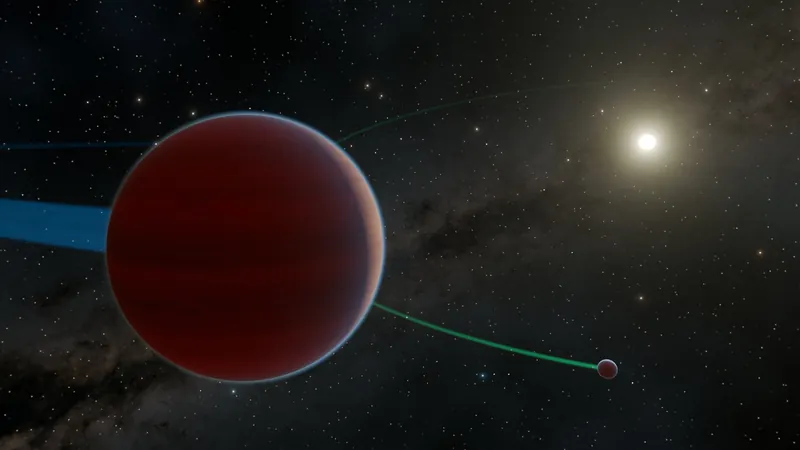
Astounding Discovery: Two Unique Planets Found in KOI-134 System Disguised as False Positives!
2025-07-03
Author: Amelia
In an exciting twist for space enthusiasts, a fresh analysis of long-stored data from NASA's Kepler Space Telescope has unearthed two previously unknown planets in the KOI-134 system. Once dismissed as a barren star system, KOI-134 now unfolds a captivating tale of celestial dynamics reminiscent of a merrily spinning carousel.
A Surprising Return to the KOI-134 System
Initially, scientists recorded hints of a possible planet back over a decade ago, but the evidence was deemed inconclusive, leading to its classification as a false positive. The peculiar transit patterns—irregularities in how planets pass in front of their star—prompted the automated system to discard the notion of a planet altogether.
Revisiting the Data Turns Up Hidden Gems
Thanks to NASA's policy of sharing data, researchers have the opportunity to revisit and reanalyze past findings. In a groundbreaking study, Emma Nabbie and her team from the University of Southern Queensland have confirmed not just one, but two planets in the KOI-134 system, highlighting their extraordinary orbital mechanics.
Meet KOI-134 b and c: Planets with Personality
KOI-134 b is revealed as a warm Jupiter, a planet similar in size to our own gas giant but orbiting closer to its star. Surprisingly, this planet showcases significant transit timing variations (TTVs), occasionally appearing as much as 20 hours early or late. This dynamism is quite literally caused by gravitational interactions with its newfound sibling, KOI-134 c.
KOI-134 c, slightly smaller than Saturn, resides in a tilted orbital plane distinct from KOI-134 b, enabling scientists to detect it only now. The two planets dance around their star with approximately 15 degrees of mutual inclination, causing their gravitational interactions to tilt their orbits as they travel.
A Cosmic Dance of Resonance and Variation
The intriguing relationship between KOI-134 b and c extends into resonance; KOI-134 b completes one orbit every 67 days, while KOI-134 c finishes two in that same span. Their motion creates a mesmerizing pattern, akin to wooden ponies bobbing up and down on a nostalgic merry-go-round.
A Rare Find in Planetary Systems
This discovery marks a pioneering moment in astronomy—a compact, multi-planetary system characterized by high mutual inclinations and significant TTVs, both of which are challenging to observe. Such phenomena are rare among nearby planetary pairs, offering scientists remarkable insights into the complexities of planetary systems.
Collaborative efforts from leading institutions, such as the University of Geneva, and the Harvard-Smithsonian Center for Astrophysics, bolster the research, shedding light on the dynamic and captivating universe that surrounds us.
What’s Next for KOI-134?
As researchers continue to unlock the mysteries of the cosmos, findings like these not only enrich our understanding of planetary formation but also inspire a deeper curiosity about life beyond our own world. With these newfound realms awaiting further exploration, the KOI-134 system stands as a beacon of discovery and intrigue in our ever-expanding universe.









 Brasil (PT)
Brasil (PT)
 Canada (EN)
Canada (EN)
 Chile (ES)
Chile (ES)
 Česko (CS)
Česko (CS)
 대한민국 (KO)
대한민국 (KO)
 España (ES)
España (ES)
 France (FR)
France (FR)
 Hong Kong (EN)
Hong Kong (EN)
 Italia (IT)
Italia (IT)
 日本 (JA)
日本 (JA)
 Magyarország (HU)
Magyarország (HU)
 Norge (NO)
Norge (NO)
 Polska (PL)
Polska (PL)
 Schweiz (DE)
Schweiz (DE)
 Singapore (EN)
Singapore (EN)
 Sverige (SV)
Sverige (SV)
 Suomi (FI)
Suomi (FI)
 Türkiye (TR)
Türkiye (TR)
 الإمارات العربية المتحدة (AR)
الإمارات العربية المتحدة (AR)